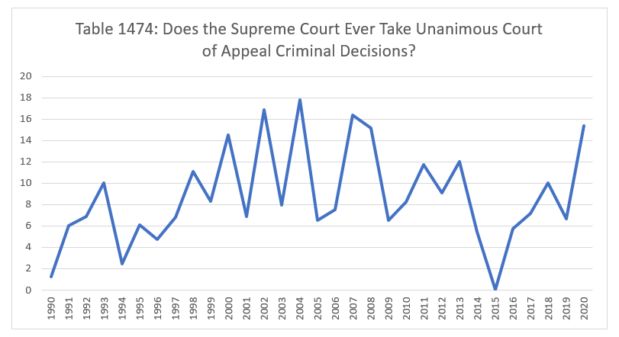Last time, we reviewed the share of the Supreme Court's civil caseload made up of decisions with a dissenter at the Court of Appeal. Now let's look at the criminal cases.
It turns out dissenters are even less important on the criminal side. In 1990, only 1.25% of the criminal docket had a dissenter below. The share rose to 10% by 1993, but immediately fell back into single digits for five of the next six years. The share of cases with dissents below rose slightly in the decade following; between 2000 and 2009, the share was between ten and twenty percent five times and in single digits five times. In 2010, the share was 8.22%. It rose to 11.76% in 2011 and 12% in 2013 but fell to 5.45% in 2014 and 5.77% in 2016. In 2015, none of the Court's criminal cases had a dissenter below. In 2017, the share was 7.14%. In 2018, it was 10%. In 2019, only 6.67% of the Court's criminal cases had a dissent below. So far in 2020, the share in 15.38%.

Join us back here next week as we turn our attention to new issues.
Image courtesy of Pixabay by USA-Reiseblogger (no changes).
Originally published by California Supreme Court Review.
The content of this article is intended to provide a general guide to the subject matter. Specialist advice should be sought about your specific circumstances.
